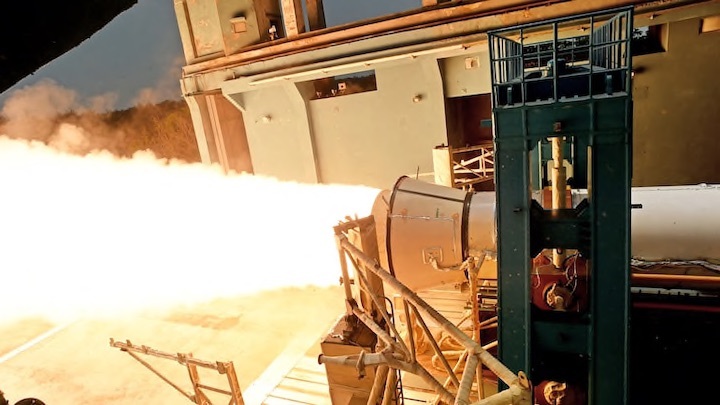8.04.2022
The launch of the SSLV was initially targeted in the fourth quarter of 2021. However, due to Covid-19 induced lockdown, the development process was affected.

SSLV stages have successfully undergone necessary ground tests. (Photo: Isro)
The Indian Space & Research Organisation (Isro) will launch Earth Observation Satellite-02 on board the Small Satellite Launch Vehicle (SSLV) in the second quarter of this year. The maiden launch of the SSLV, now delayed, will boost India as a major launch destination to deploy commercial satellites in Low Earth Orbit (LEO).
Science & Technology Minister Dr. Jitendra Singh on Thursday said that EOS-02 is a technology demonstration satellite for various new technologies with applications that include agriculture, forestry, geology, hydrology, miniaturised power electronics, reaction wheels.
The launch of the SSLV was initially targetted in the fourth quarter of 2021, however, due to Covid-19 induced lockdown, the development process was affected. Disruption in the domestic supply chain was a factor for the delay of spacecraft realization due to the non-availability of components, manpower, and facilities.
The latest announcement comes weeks after Isro successfully conducted the ground testing of the newly developed solid booster stage (SS1) that will power its liftoff. The remaining stages of SSLV (SS2 & SS3) have successfully undergone necessary ground tests and are ready for integration.
Isro had initially planned to launch SSLV in the first quarter of this year. The SSLV will provide a payload capability of 500 kilograms to a 500-kilometer planar orbit. By comparison, the PSLV — the workhorse of Isro — can take up to a 1,750-kilogram payload into SSO of 600 km altitude.
The government has sanctioned Rs 169 crores for the development of the project. This will cover the development & qualification of the vehicle systems and the flight demonstration through three development flights (SSLV-D1, SSLV-D2 & SSLV-D3).
The minister also highlighted the findings behind the failure of the GSLV-F10 mission that launched with an Earth observation Satellite last year. "Initial investigations with the post-flight data conducted immediately after the launch indicated that an anomaly in the Cryogenic Upper Stage led to the failure of the mission. A National level Failure Analysis Committee (FAC) consisting of experts from academia & ISRO was immediately constituted to identify the causes of the anomaly in the Cryogenic Upper Stage of GSLV, that led to a mission abort and to recommend corrective actions for future missions," the minister said.
The 51.70-meter-tall rocket GSLV-F10/EOS-03 had successfully lifted off from the second launch pad at the Sriharikota spaceport as planned at 05.43 am on August 12. While the first and second stages of the mission kicked in successfully with a nominal burn, it was the third stage that did not go as planned.
Quelle: INDIA TODAY
